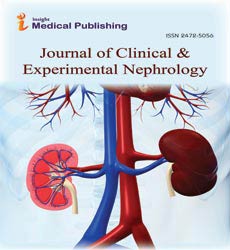Techniques Used in Proteomics
Abraham Kebede*
Department of Pathology, Jimma University Jimma, Ethiopia
- *Corresponding Author:
- Abraham Kebede, Department of Pathology, Jimma University Jimma, Ethiopia, Tel: 0025135982001; E-mail: charrison@guw.uk
Received: March 16, 2022, Manuscript No. IPJCMPY-22-12065; Editor assigned: March 19, 2022, PreQC No. IPJCMPY-22-12065 (PQ); Reviewed: April 02, 2022, QC No. IPJCMPY-22-12065; Revised: 5-Apr-2022, Manuscript No. IPJCMPY-22-12065 (R); Published: April 08, 2022, DOI: 10.36648/IPJCMPY/22.6.2
Citation: Kebede A (2022) Techniques Used in Proteomics. J Clin Mol Patho Vol:6 No:1
Introduction
Proteomics has been made possible by the sequencing of the human genome and the genomes of a number of pathogens, which has provided a sequence-based foundation for mining proteomes. As a result, there is a lot of interest in using proteomics to learn more about disease processes, create new biomarkers for illness diagnosis and early detection, and speed up drug development. This enthusiasm offers several opportunities as well as obstacles in meeting the demands for high sensitivity and throughput in disease-related research. The study of the function of all expressed proteins is known as proteomics. Large-scale data sets for protein–protein interactions, organelle composition, protein activity patterns, and protein profiles in cancer patients have made tremendous progress in recent years. However, for proteomics to reach its full potential, more technological advancements, the formation of multinational proteomics studies, and free access to results are required.
Description
Recent achievements demonstrate the importance of mass spectrometry-based proteomics in molecular and cellular biology, as well as the burgeoning discipline of systems biology. These include the mapping of several organelles, the simultaneous description of the malaria parasite genome and proteome, and the development of quantitative protein profiles from various species using affinity-based isolations on a small and proteome-wide scale. Mass spectrometry's ability to detect and, increasingly, precisely quantify hundreds of proteins from complicated mixtures is predicted to have a wide-ranging impact on biology and medicine. The study of proteins and their interactions in a cell is known as proteomics. With the completion of the Human Genome Project, the focus is shifting to the human organism's protein complement. Proteomics is intended to produce improved disease markers for diagnosis and therapeutic monitoring since it more correctly reflects the dynamic state of a cell, tissue, or organism. Proteomics technologies, which allow for the worldwide identification and quantification of proteins, have opened up new possibilities and problems for those looking to better understand illnesses High-throughput proteomics technologies Combined with modern bioinformatics, molecular markers of diseases based on protein pathways and signaling cascades are commonly discovered. Mass spectrometry is an essential tool for molecular and cellular biology and plays an important role in proteomics. While there is a lot of potential, there are still a lot of problems to tackle, such as mining low abundant proteins and integrating proteomics with genomes and metabolomics data.
Conclusion
Proteomics refers to the use of technology to identify and quantify the total amount of proteins present in a cell, tissue, or organism. It works in tandem with other "omics" technologies like genomics and transcriptomics to determine the identity of an organism's proteins and to understand their structure and activities. Proteomics-based technologies are used in a variety of research settings, including the detection of various diagnostic markers, vaccine candidates, pathogenicity mechanisms, changes in expression patterns in response to various signals, and the interpretation of functional protein pathways in various diseases. Proteomics is quite complicated because it entails analyzing and categorising a genome's total protein signatures.
Open Access Journals
- Aquaculture & Veterinary Science
- Chemistry & Chemical Sciences
- Clinical Sciences
- Engineering
- General Science
- Genetics & Molecular Biology
- Health Care & Nursing
- Immunology & Microbiology
- Materials Science
- Mathematics & Physics
- Medical Sciences
- Neurology & Psychiatry
- Oncology & Cancer Science
- Pharmaceutical Sciences
